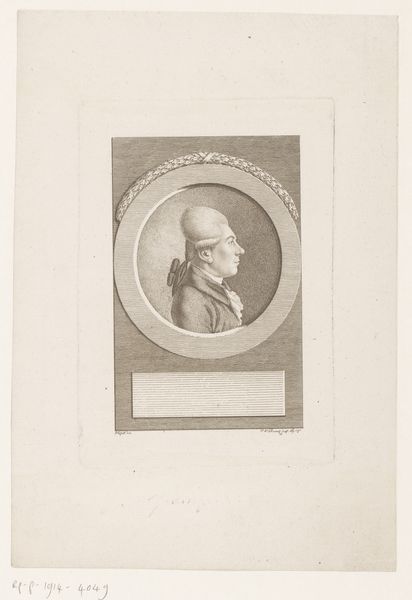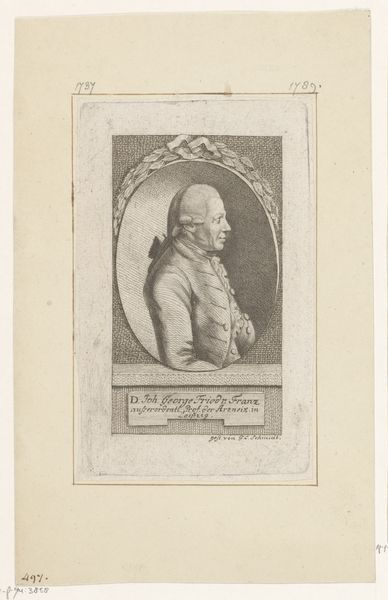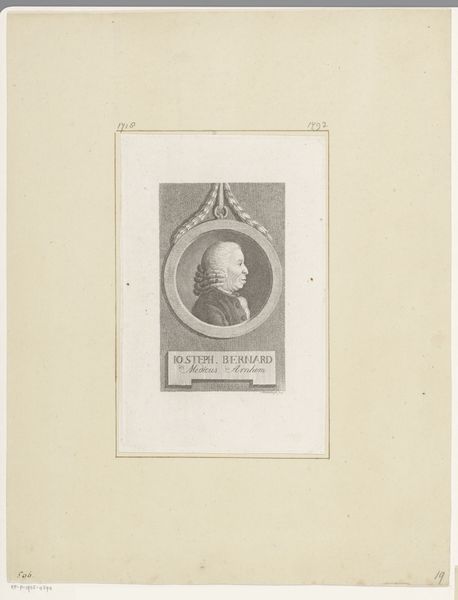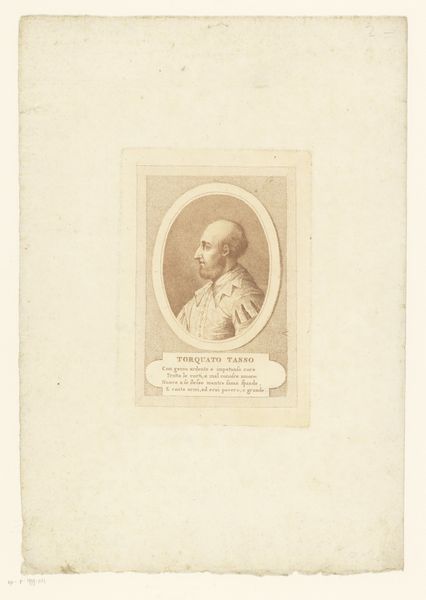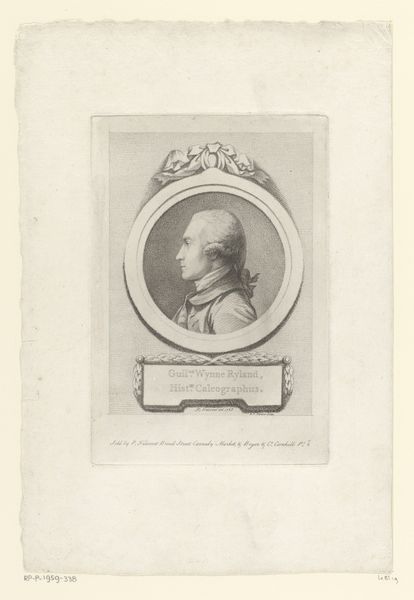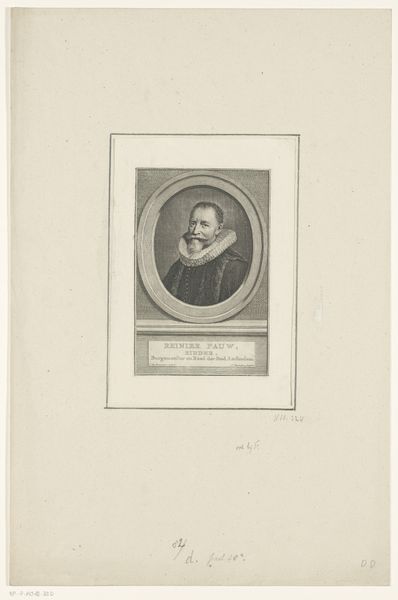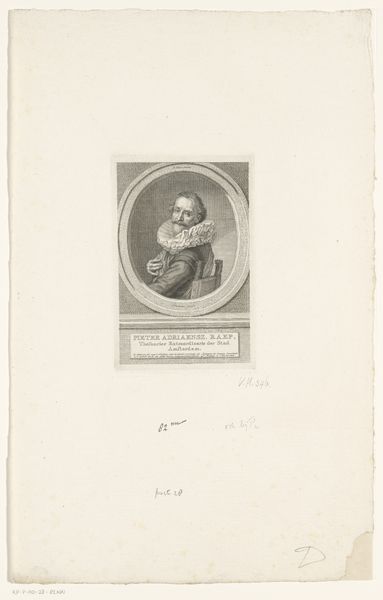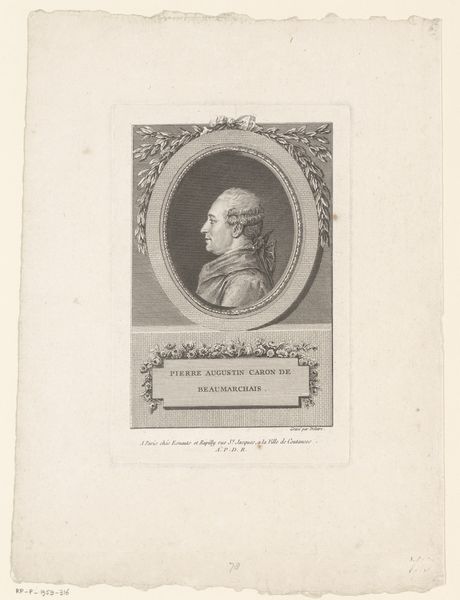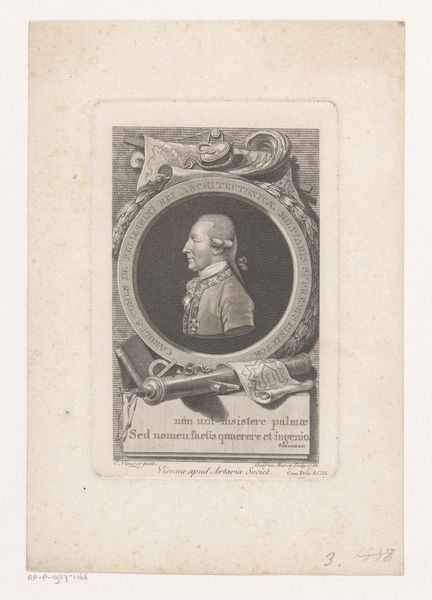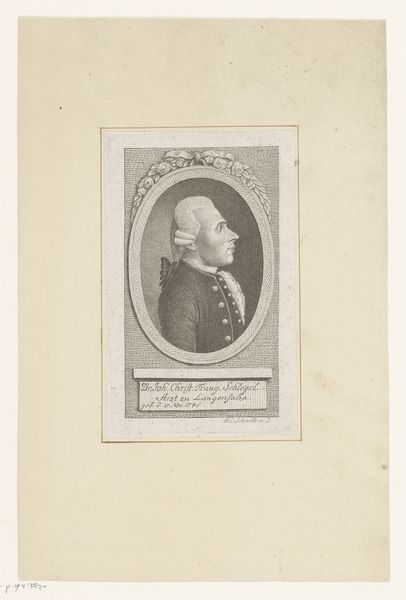
print, engraving
#
portrait
#
neoclacissism
# print
#
engraving
Dimensions: height 156 mm, width 102 mm
Copyright: Rijks Museum: Open Domain
Curator: Let's discuss this interesting print, "Portrait of Johann Christian Gottlieb Ackermann," crafted around 1790. It's an engraving, a print, now residing at the Rijksmuseum. What's your initial response to this work? Editor: It feels very contained, almost severe. The subject is presented in profile within this perfect circle, set against the stark, uniform stippling. It projects order, reserve, control. Curator: The constraints you perceive mirror the prevailing intellectual and political climate of the time. Johann Christian Gottlieb Ackermann was a professor, likely part of a privileged, educated class during a period of societal unrest, especially considering the French Revolution brewing in the background. Prints like these served to immortalize, yes, but also to reinforce societal hierarchies. Editor: Exactly! Note how Bock, the engraver, used clean, precise lines. The detailing on Ackermann's jacket, the wig... everything emphasizes rationality. There is very little tonal variation in this print—a deliberate choice that strips away any sense of fleeting emotion, opting instead for timeless representation. It also calls attention to the sharp formal juxtaposition of the oval with the rectangle in which it’s embedded. Curator: Indeed. This visual restraint also tells us something about the role of men in 18th century intellectual circles. The man of reason, in control of his passions—an ideal constructed in contrast to more 'feminine' expressions of emotion or perceived excess. The laurel wreath detail feels symbolic of recognition and merit, conferred by a male-dominated institution. Editor: The visual semiotics, if you will, are carefully calculated, not only as to their effect but to imply specific meanings for contemporary viewers familiar with these representational devices. Even the inscription serves to confirm the man's importance. Curator: It reinforces a particular notion of accomplishment tied to profession and societal standing. It would be fruitful to investigate who commissioned such a portrait and what message it aimed to convey. Editor: True. Through its composition and medium, we can perceive societal pressures, power dynamics, even philosophical arguments. Curator: Absolutely. An investigation that uses the work of art as a key entrypoint for further consideration. Editor: I see this small token, neatly inscribed, through the social lens you are using; I shall never look at portraiture quite the same way.
Comments
No comments
Be the first to comment and join the conversation on the ultimate creative platform.
